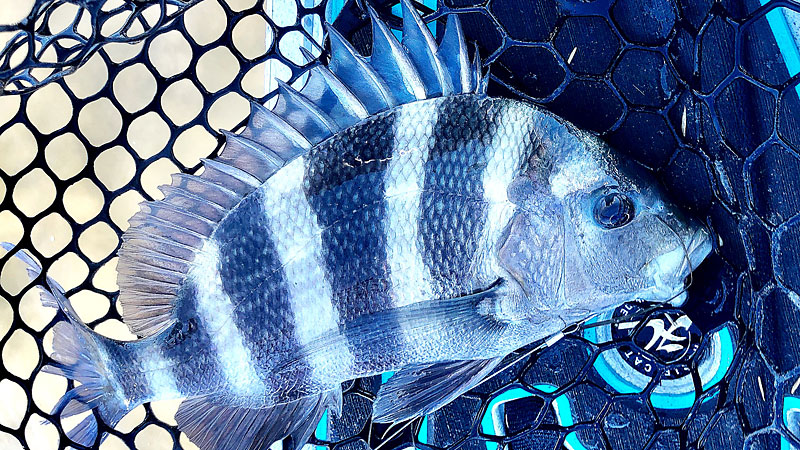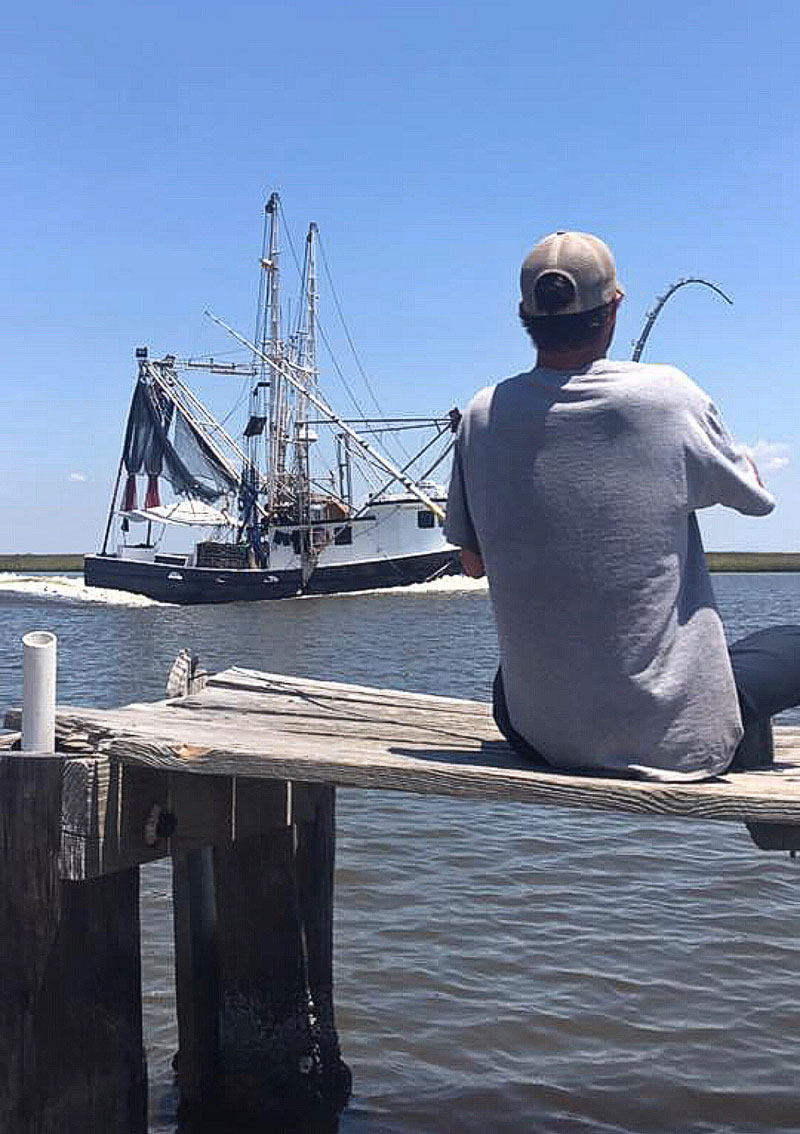
Joshua Bourg of Larose suggests that “scraping” for sheepshead is the way to catch them.
“I started scraping for them around 20 years ago,” he said. “I noticed that it worked really well, so I started sharing my technique with other people who target sheepshead regularly.”
What is scraping for sheepshead?
The process involves scraping barnacles and other crustaceans off pier posts or sea walls, in effect, chumming.
“Before you start, you will need a garden hoe or a shovel for this to work,” he said. “Either one will do the trick, as long as the handle can reach where the barnacles and/or oysters are. You don’t need any specialized equipment other than what can be found in your shed.
“The next thing you want to do is to look for a piling or bulkhead that has barnacles and/or oysters. The deeper the water is, the better, and the more pilings in a small area, the more sheepshead that will gather,” he said. “The sheepshead will already be hanging around the area scanning for food, such as small crabs. Once scraping begins, they will all gather in the cloud of debris coming from the pilings or bulkhead. It’s basically like chumming them with the existing food source.

“Once you locate a good spot, you should start to scrape a couple of pilings in an area. I prefer to put out a couple of baits at different depths. Once you figure out the depth they are, then you can adjust the other lines. Sheepshead will usually come to the spot you scraped, so you need a rod rigged to pitch. The more you scrape, the more sheepshead that will show up and the better bites you will get.
“I prefer to use fresh shrimp with a long-shank hook, when I target sheepshead when scraping,” Bourg said. “Other places swear by fiddler crabs. Fiddler crabs are a little difficult to get around here, unless you catch them yourself.”
Bourg said if you want to use them, fiddler crabs can be found along the beaches and saltwater islands where there is a good bank and marsh grass. But shrimp is king in Louisiana, and it’s the easiest local bait to get.
Other spots to try
“Not everyone is going to want to put in the time to scrape for sheepshead, and that’s fine,” Bourg said. “These fish are found everywhere in the marshes, channels, and offshore.
“The platforms in the bay really produce! I’ve seen giant schools of them on some days. Several hundred will be podded up in the summer months. You would have to try not to catch one, if you come across these schools.”
“I’ve also seen sheepshead tailing a lot in the marshes when fishing in really shallow water. They can sometimes be mistaken for redfish.
“Oyster reefs are a great place to fish for them, as well. Look for bank lines with oysters and a little current running through. This will be like a highway for them. Again, shrimp and a long-shank hook will work. I prefer using long-shank hooks, because of their teeth. It’s easier to unhook them.”


